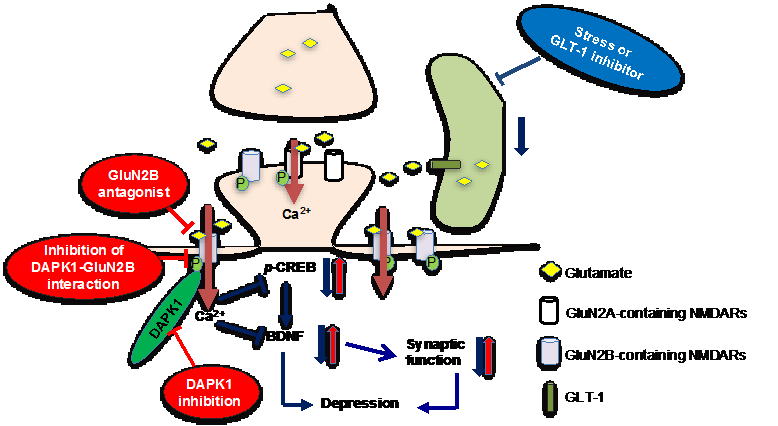
Lu Lin's group found that chronic unpredictable stress (CUS) induced a series of changes in the rat medial prefrontal cortex (mPFC), including extracellular glutamate accumulation, a decrease in both phosphorylated DAPK1 at Ser308 and phosphorylated GluN2B at Ser1303, and an increase in the DAPK1-NMDAR interaction. Selective GluN2B antagonist, DAPK1 knockdown or the uncoupling of DAPK1 from the NMDAR GluN2B subunit produced rapid antidepressant-like effects and reversed CUS-induced alterations in the mPFC. CUS also enhanced GluN2B-mediated NMDA currents and extrasynaptic responses that were induced by bursts of high-frequency stimulation, which may be associated with the loss of astrocytes and low expression of glutamate transporter-1 (GLT-1). These finds suggest a critical role of DAPK1interaction with the NMDAR GluN2B subunit in the pathophysiology of depression and provide a potential therapeutic target for new antidepressant treatments.
<span font-size:16px;"="">Li SX, Han Y, Xu LZ, Yuan K, Zhang RX, Sun CY, Xu DF, Yuan M, Deng JH, Meng SQ, Gao XJ, Wen Q, Liu LJ, Zhu WL, Xue YX1, Zhao M, Shi J, Lu L (2017) Uncoupling DAPK1 from NMDA receptor GluN2B subunit exerts rapid antidepressant-like effects. Mol Psychiatry. [Epub ahead of print]